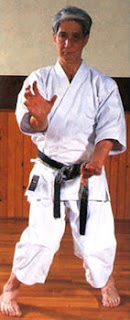The style of Buddhism developed here centered on martial arts training and Zen meditation. Thanks to Shaolin Kung Fu movies, they’re probably probably the most familiar Buddhist monasteries in the West.
The monks studied the movements of animals and copied them – crawling snakes, leaping tigers, dancing mantises, and so on. The exercises evolved into a type of self-defense, as The Shaolin Monastery China was in a secluded location where bandits would have traveled and wild animals were an occasional difficulty, so the martial side of the temple most likely started out to fulfill self-defense requirements. Soon after a although, these movements had been codified into a system of self-defense.
From childhood, Shaolin monks subjected themselves to rigorous training five hours each day, daily. Only soon after 20 years of this could they be regarded as totally fledged monks, by which time they could perform incredible feats. Examples range from breaking concrete slabs with their fists to balancing on 1 finger.
The martial arts taught at The Shaolin Monastery China had a spiritual and moral dimension that was regarded as equally, if not much more, essential than the physical. The monks spent as numerous hours praying and meditating as they did in kung fu training. They adhered to a moral code in which self-defense was the only acceptable reason for fighting and killing one’s opponent was to be avoided if possible.
In 1674, a group of monks went to the aid of the Ching Emperor against foreign invaders. Although they were victorious, when the Emperor asked if they join the Ching army, the monks declined. The angry Emperor had the temple destroyed. Most of the surviving monks fled to countryside and practiced in hiding or led rebel groups to assist overthrow the Ching government.

By the early 1700′s Northern Shaolin had develop into a set style. Northern Shaolin, and was only one of the a number of fighting styles taught at the original Henan Temple.
Right after this, each Buddhists in the temple and Buddhists all over China faced times when they were attacked. In numerous eras, the governments tried to destroy the religion. At times, the monks had been considered to be enemies by several governments or armies. At other times, the monks at the temple were favored if they helped to protect the rulers.
the Manchus destroyed the compound in 1647 and massacred virtually the whole population of monks. The Shaolin temples china (The Shaolin Monastery China) was not rebuilt until about 1800.
Today’s robed residents at Shaolin are extremely skilled fighters, but can not be regarded as genuine Shaolin monks, for the spiritual side of their discipline is now virtually absent. The truth is, the present abbot has a distinct reputation for aggression. There are still genuine Shaolin monks in China, but they keep a low profile and are not to be found at Shaolin.
Nevertheless, the ancient temple remains a center of pilgrimage for martial arts enthusiasts, an excellent place to get quality kung fu lessons, along with a popular tourist destination.




































